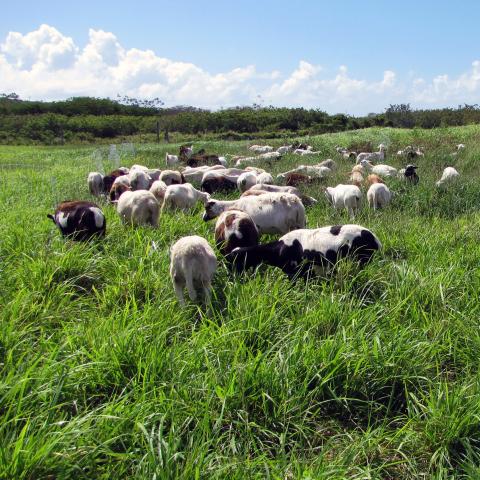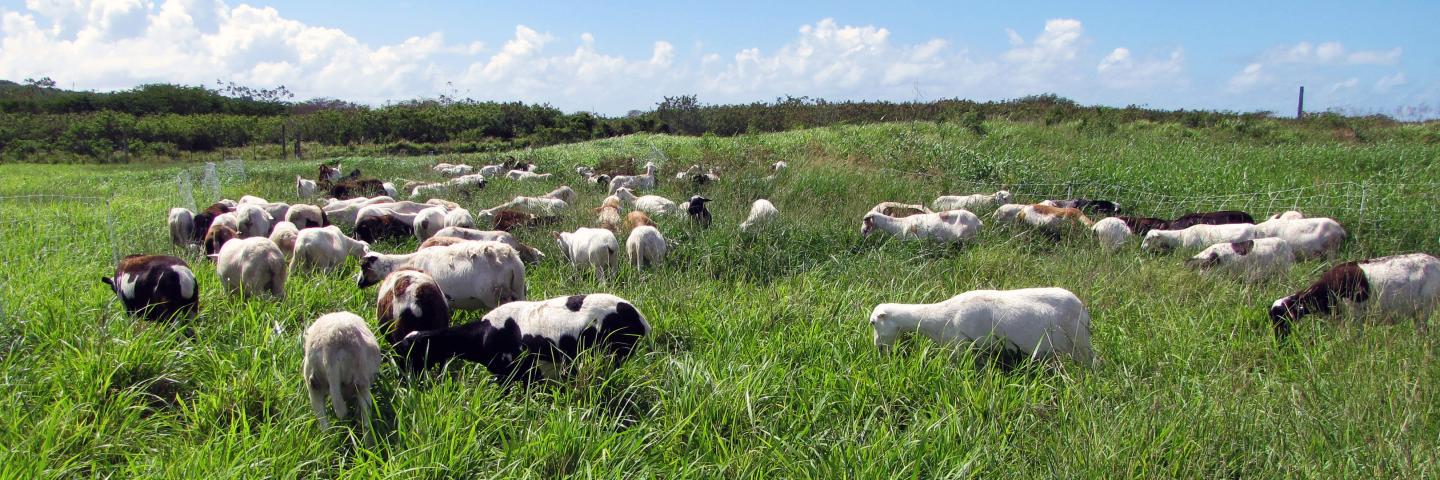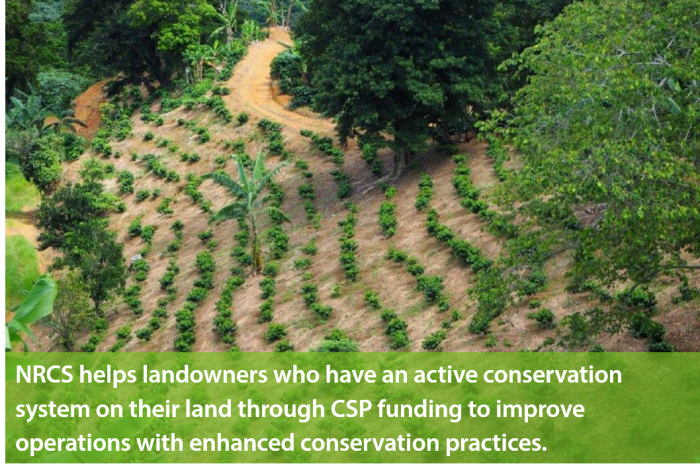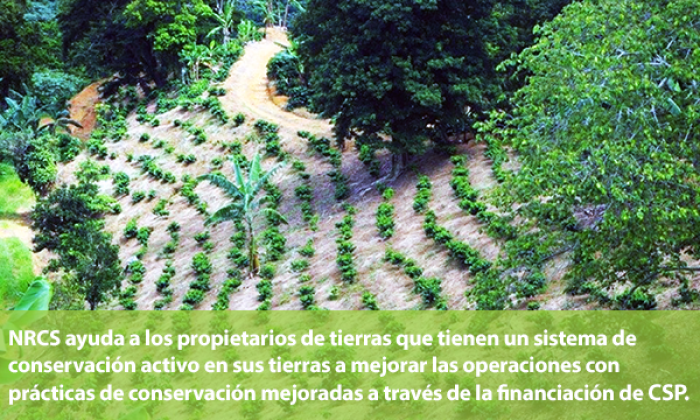
Press Release


CSP is a voluntary program that helps farmers build on conservation efforts while strengthening operations.
Whether you are looking to improve grazing conditions, increase crop resiliency, or develop wildlife habitat, we can custom design a CSP plan to help you meet those goals. We can help you identify natural resource problems in your operation and provide technical and financial assistance to solve those problems or attain higher stewardship levels in an environmentally beneficial and cost-effective manner.
If you are already taking steps to improve the condition of the land, chances are, CSP can help you find new ways to meet your goals.
NRCS works one-on-one with producers to develop a conservation plan that outlines and enhances existing efforts, using new conservation practices or activities, based on management objectives for your operation. Producers implement practices and activities in their conservation plan that expands on the benefits of cleaner water and air, healthier soil and better wildlife habitat, all while improving their agricultural operations.
For example, if you have been planting a cover crop, you may decide to try an enhancement for a multi-species cover crop or implement a deep-rooted cover crop to break up soil compaction and further improve the health of your soil.
CSP offers annual payments for implementing these practices on your land and operating and maintaining existing conservation efforts. Want to take it a step further? CSP also offers bundles where you can select a suite of enhancements and receive a higher payment rate.
CSP is for working lands and is the largest conservation program in the United States. Thousands of people voluntarily enroll in the program because it helps them enhance natural resources and improve their business operation.
CSP participants are seeing real results. Some of these benefits include:
You can watch how farmers and ranchers across the country are implementing CSP activities and other conservation activities in our Conservation at Work video series. For example, see how producers are using the cover crop conservation practice to improve soil health, water efficiency, reduce use of fertilizer and improve pest control.
The program represents a genuine commitment to conservation – CSP contracts are for five years, with the opportunity to compete for a contract renewal if you successfully fulfill the initial contract and agree to achieve additional conservation objectives. An NRCS conservation planner will work closely with you, throughout the entire contract process.
Contract payments are based on two components:
Most participants will be eligible for a $4000 minimum payment during any year that their total annual contract payment falls below the minimum payment amount.
Existing CSP participants may be eligible to renew their contract for an additional 5-year term during the fifth year of their initial contract. Participants who have met the terms of their initial contract and who agree to implement more conservation activities can compete for a renewal contract. To meet the renewal stewardship threshold, the participant must agree to meet or exceed two additional priority resource concerns or agree to adopt or improve conservation activities to achieve higher levels of conservation for two existing priority resource concerns.
NRCS offers technical assistance at no cost. Producers can use our personalized advice and information, based on the latest science and research, to make informed decisions about their land.
Technical Service Providers (TSP) can help producers plan, design and implement conservation practices or develop conservation activity plans to improve their agricultural operations. For more information on the Technical Service Provider program, visit our TSP page.
Technical assistance is also offered through our Conservation Technical Assistance (CTA) program
Need a local Technical Service Provider? Visit the Locate a TSP page.
The first step in the process, is to notify NRCS of your interest in CSP. Then a conservation planner will schedule a visit to your property. During that visit, they will walk the land with you to discuss and review any resource concerns. Following the site visit, the conservation planner will develop a conservation plan that includes a variety of conservation practices, activities and enhancements to improve the level of conservation benefit and to address the resource concerns.
Applications for NRCS conservation programs are accepted on a continuous basis. However, application ranking dates are set at key times throughout the year.
For more information on CSP enhancements and bundles, please visit our Enhancements and Bundles page.
Results data for CSP and other NRCS programs are housed on the RCA Data Viewer.
To learn more about CSP, contact your local NRCS office.
We work with some of the most amazing people on earth – farmers, ranchers and foresters that value the health of our environment as much as they do their products and their bottom line.
Explore the links below to learn more about these conservationists at heart and how they are utilizing CSP to maintain viable business operations providing food, fiber, and energy that contribute to the economy, creating a more sustainable future for all of us.
Below are the NRCS Caribbean Area FY2025 CSP Classic Ranking Criteria and questions by funding pool:
Below are the NRCS Caribbean Area FY2025 CSP Renewal Ranking Criteria and questions by funding pool:
Whether you are looking to improve grazing conditions, increase crop yields, or develop wildlife habitat, we can custom design a CSP plan to help you meet those goals. We can help you schedule timely planting of cover crops, develop a grazing plan that will improve your forage base, implement no-till to reduce erosion, or manage forested areas in a way that benefits wildlife habitat. If you are already taking steps to improve the condition of your land, CSP can help you find new ways to meet your goals.

CSP applications are accepted year-round, however, NRCS sets application “cut-off” or submission deadlines to evaluate, rank and approve eligible applications. The following are the cut-off dates for fiscal year 2025:
CSP is for working lands. It is the largest conservation program in the United States with 70 million acres of productive agricultural and forest land enrolled in CSP. Thousands of people that have made the choice to voluntarily enroll in the program because it helps them enhance natural resources and improve their business operation.

Nuestro Programa de Administración de la Conservación (CSP, por sus siglas en inglés) es un programa voluntario que ayuda a los agricultores a aprovechar sus esfuerzos de conservación existentes mientras fortalece sus operaciones. Ya sea que esté buscando mejorar las condiciones de pastoreo, aumentar el rendimiento de las cosechas o desarrollar un hábitat de vida silvestre, podemos diseñar un plan de CSP a la medida para ayudarlo a alcanzar esos objetivos. Podemos ayudarlo a programar la siembra adecuada de cultivos de cobertura, desarrollar un plan de pastoreo que mejore su base de forraje, implementar la siembra directa para reducir la erosión o administrar áreas boscosas de una manera que beneficie el hábitat de la vida silvestre. Si ya está tomando medidas para mejorar la condición de su terreno, CSP puede ayudarlo a encontrar nuevas formas de alcanzar sus objetivos.
CSP es para tierras finca en general. Es el programa de conservación más grande de los Estados Unidos con 70 millones de acres de tierras agrícolas y forestales productivas inscritas en CSP. Miles de personas han elegido inscribirse voluntariamente en el programa porque les ayuda a mejorar sus recursos naturales y sus operaciones comerciales.
A través de CSP, podemos ayudarlo a desarrollar su negocio mientras implementa prácticas de conservación que ayudan a garantizar la sostenibilidad de toda su operación. Una buena administración de la tierra no solo conserva los recursos naturales de su finca, sino que también brinda múltiples beneficios a las comunidades locales, que incluyen una mejor calidad del agua y el aire y el hábitat de la vida silvestre, así como también alimentos saludables.
La Ley Agrícola de 2018 autoriza a NRCS a aceptar nuevas inscripciones de CSP desde ahora hasta 2023, y hace algunas mejoras importantes al programa. Estas actualizaciones incluyen:
La mayoría de los productores agrícolas que participan en CSP ya han estado implementando prácticas de conservación en sus tierras. CSP ofrece mejoras para esas prácticas. Por ejemplo, si ha estado practicando un plan de pastoreo prescrito por NRCS, CSP puede darle opciones para mejorar esa práctica con actividades tales como manejo de pastoreo para mejorar las plantas silvestres, o manejo de pastoreo para reducir la compactación del suelo o manejo de pastoreo para mejorar la función ribereña.
Las solicitudes de CSP se aceptan durante todo el año; sin embargo, NRCS establece fechas internas para evaluar, clasificar y aprobar las solicitudes elegibles. Las siguientes son fechas límite identificadas para el año fiscal 2023:
Each year, NRCS re-evaluates the amount of financial assistance available for each practice in each territory. We consider the current costs for materials and labor on-island and also the fair market value for opportunity costs that may arise (e.g. conversion of productive land).
NRCS provides financial assistance for selected conservation practices. The availability and amount of financial assistance can vary between states. Download the Puerto Rico and Virgin Islands payment schedules below to see which activities qualify, and how much financial assistance is available.
Learn MoreContact your local service center to start your application.
Do you farm or ranch and want to make improvements to the land that you own or lease?
Natural Resources Conservation Service offers technical and financial assistance to help farmers, ranchers and forest landowners.

To get started with NRCS, we recommend you stop by your local NRCS field office. We’ll discuss your vision for your land.
NRCS provides landowners with free technical assistance, or advice, for their land. Common technical assistance includes: resource assessment, practice design and resource monitoring. Your conservation planner will help you determine if financial assistance is right for you.
We’ll walk you through the application process. To get started on applying for financial assistance, we’ll work with you:
Once complete, we’ll work with you on the application, or CPA 1200.
Applications for most programs are accepted on a continuous basis, but they’re considered for funding in different ranking periods. Be sure to ask your local NRCS district conservationist about the deadline for the ranking period to ensure you turn in your application in time.
As part of the application process, we’ll check to see if you are eligible. To do this, you’ll need to bring:
If you don’t have a farm number, you can get one from USDA’s Farm Service Agency. Typically, the local FSA office is located in the same building as the local NRCS office. You only need a farm number if you’re interested in financial assistance.
NRCS will take a look at the applications and rank them according to local resource concerns, the amount of conservation benefits the work will provide and the needs of applicants. View Application Ranking Dates by State.
If you’re selected, you can choose whether to sign the contract for the work to be done.
Once you sign the contract, you’ll be provided standards and specifications for completing the practice or practices, and then you will have a specified amount of time to implement. Once the work is implemented and inspected, you’ll be paid the rate of compensation for the work if it meets NRCS standards and specifications.